From Newport to Woodstock: The Real History of Music Festivals
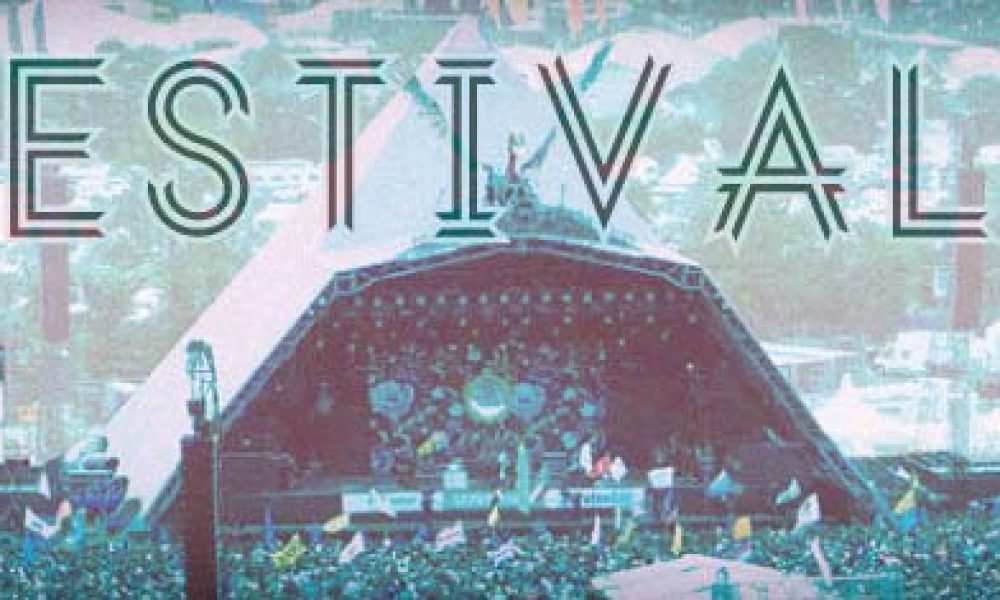
Thanks to the wonder of modern TV’s talking heads, and too much-distilled history, there are some people that think that Woodstock was the first music festival. When it’s pointed out that there was the Newport Jazz and Folk Festivals which started in the 1950s some will say, “Ah! But it was the first rock festival.” Wrong again! Woodstock just happened to have been turned into a movie and even that was more by luck than judgement – the soundtrack and videos and DVDs have all sold in millions helping to give the impression that it was first. To be fair, Woodstock did become the benchmark by which other music festivals measured themselves. It’s all part and parcel of the shorthand of history.
It was the Newport Jazz Festival in 1954 that was the first real music festival. Ella Fitzgerald played the first one and Louis Armstrong was there the following year, and along with other stars including Duke Ellington, Count Basie and Dizzy Gillespie they became synonymous with this iconic event. In 2013 the Stones played Hyde Park for the first time since 1969, having already conquered Glastonbury and Bon Jovi appeared at the Isle of Wight. In 2012 Black Sabbath, with Ozzy out front, appeared before 100,000 adoring fans at Download and this year they will appear at Hyde Park along with Motorhead and Soundgarden.
Since those early jazz and folk happenings, almost every musical genre has had festivals to attract the faithful as well as potential converts. Some festivals, notably Glastonbury, have transcended musical tribalism and are now genuine family affairs, with grandparents their children and their grandchildren attending.
Today there is a European festival circuit where the biggest, as well as some of the less well-known artists, trek from one event to another. If it’s June it must be Rock am Ring, if it’s August, Reading…
Travel back in time and there’s Kiss at Rock am Ring in 2010, The Who at Woodstock in 1969 giving a seminal performance, yet one that very nearly didn’t happen. And who can forget Nirvana at Reading or The Mamas and The Papas at Monterey. If you remember seeing T. Rex at Glastonbury then you were one of just 1,500 people who paid their £1 to get in and copped a free pint of milk from farmer Michael Eavis.
So just how did we get to and from Woodstock?
It was the jazz festivals at Newport in the Fifties that were the original outdoor happening from which all others during the 1960s and beyond took inspiration. Even in England, there were small-scale open-air events that might just have passed for festivals, these too were organised by jazz enthusiasts. The size and scale of festivals have always been determined by technology, particularly the PA system that allows audiences to be able to hear the performers at an acceptable volume.
When Jazz impresario George Wein began his Jazz Festival in July 1954 in Newport, Rhode Island at the old open-air casino, around 6,000 people turned up for the opening night. Ella Fitzgerald was the headliner on the second day, with Dizzy Gillespie and Gerry Mulligan topping the bill the previous evening.
The following year, and many years thereafter, the crowd-pleasing Louis Armstrong appeared. His repertoire and easy manner made him the perfect festival fare, and it’s one of the secrets of what can make certain festivals work. You need a balance of artists to create a sense of something for everyone. Just why it was jazzers that had the early festivals has baffled some modern-day social commentators, but it’s simple really. In 1954, and for about a decade before, it was ‘hip-cats that dug jazz’ that were on the cutting edge. Norman Granz, the man who founded Verve Records came up with the idea for his Jazz at the Philharmonic tours, they proved to be a template for modern touring, but they also catered to fans that were as rabid as any heavy metal fans in the late 20th century.
Meanwhile, in the UK, the longest-running of the British festivals was established, when, in 1961 the National Jazz Federation decided to set up a very British version of Newport. The first festival took place in Richmond, to the west of London, in August 1961 it was almost entirely made up of British jazz, with Chris Barber the most well-known name on the bill. A few years later the Stones appeared at the Festival and before the decade was out it changed names and location several times, before reaching its permanent home at Reading in 1971.
When Nirvana appeared at the Reading Festival in 1992 it was one of the premier British festivals. It turned out to be Nirvana’s last UK concert, as well as one of their most celebrated. Kurt Cobain, wearing a medical gown and in a wheelchair was pushed onto the stage by journalist Everett True, in a dark parody of the speculation surrounding the Nirvana frontman’s mental state; their performance was released in 2009 as a live album/DVD.
The Rolling Stones appeared for the first time at the third Richmond Jazz and Blues Festival on August Bank Holiday Monday, 1963, receiving the princely sum of £30. They were bottom of a bill that included Acker Bilk, Terry Lightfoot, and The Cyril Davies All-Stars with Long John Baldry and The Velvettes.
They appeared again the following year and then spent most of the next three years playing on package tours before finally succumbing to the lure of a big outdoor gig, after Mick Jagger had seen Eric Clapton and Stevie Winwood’s Blind Faith playing a free concert in Hyde Park in June 1969.
When the Stones played Hyde Park a month later it was just a few days after Brian Jones’s death. It was their first real gig for a couple of years and their first with Mick Taylor as a member of the band. It’s a performance that has become the stuff of legend, as well as being the first time they were ever called, the greatest rock and roll band in the world after a guy that worked for the concert’s promoters announced them as such – it certainly stuck. Come 2013 and the Stones play both Glastonbury for the first time and return to Hyde Park after 44 years to play two nights in July.
By the time the Stones played Richmond it was covering more than one base by calling itself, a Jazz and Blues Festival. It had taken something of a lead from the Newport Folk Festival that in the early 1960s added blues musicians to the bill when the likes of Lightnin’ Hopkins, Skip James and Son House proved hugely popular. The Newport Jazz Festival also added blues to their line up and Muddy Waters appeared on the 3rd July 1960 with his all-electric backing band laying down his credentials as, the King of Chicago Blues. With Otis Spann on piano, James Cotton on harmonica and Pat Hare on second guitar this was as good as electric blues gets. Four months later Chess records released Muddy Waters at Newport and the Stones had a copy in their record collection at their flat in Edith Grove, Chelsea in 1962 copy to go along with The Best of Muddy Waters on which is the track after which they named themselves. By 1969, a few weeks before Woodstock, Muddy appeared at the Newport Folk Festival, still playing the blues better than just about anyone
The hundreds of thousands that will pay millions of pounds between them to see the Stones and a hundred more acts at Glastonbury would scarcely believe how different this year’s festival is from the very first one in 1970. Such is the monumental scale of the Glastonbury Festival that it’s now a question of who hasn’t played it rather than who has – in case you’re wondering Pink Floyd, The Eagles, Prince, Metallica and Elton John are still to play there. The fact that T. Rex played it in 1970 was another one of those happy coincidences because the headline act was supposed to be The Kinks, but they pulled out at the last minute, along with Wayne Fontana and the Mindbenders. Glastonbury took place 19 and 20 September 1970 after farmer Michael Eavis’s visit to the Bath Festival of Blues and Progressive Music, at Shepton Mallet a few months earlier. T. Rex, then still known as Tyrannosaurus Rex, headlined with a bill that included Sam Apple Pie, Keith Christmas, Amazing Blondel, Al Stewart and Quintessence.
Two highlights of the UK’s 2013 summer Festival season have already been Bon Jovi‘s appearance at the Isle of Wight Festival, an event that first occurred in in 1968 when Jefferson Airplane topped the bill along with, The Crazy World of Arthur Brown, The Move, Tyrannosaurus Rex and Plastic Penny…
After three consecutive years The Isle of Wight Festival was no more, that is until it was revived in 2002 when Robert Plant was one of the headliners at what was a small event. Since then numerous bands have taken the ferry crossing, or arrived by helicopter, including Bryan Adams, Keane, The Rolling Stones, Paul McCartney and Florence and the Machine.
Like the Isle of Wight, Download has also had an interrupted history, as well as a few name changes. Held at Donnington Park it was first called the Monsters of Rock Festival, when in 1980 when Rainbow was the headliner. M of R continued until 1996 and in the intervening years every self-respecting rock band played there, including Aerosmith, Metallica, Kiss and in 1982, Status Quo. In 2002 the event was branded Ozzfest and the following year, Download, so named because the Internet was the new form of connectivity and Monsters of Rock was seen as somewhat passé. It is still a monster of a festival that lasts three days and has five different stages that featured close to 175 acts in 2013. In 2012, Black Sabbath chose it as the festival to make their long-anticipated reunion with Ozzy, guitarist Tony Iommi, the one Sabbath member to remain constant throughout the band’s history, and bassist Geezer Butler.
It’s not just the UK and America that has festivals. These days there is a European and world wide festival circuit that vie to attract the biggest and best acts. Rock am Ring (Rock at the Ring) and Rock im Park (Rock in the Park) take place simultaneously, with Rock am ring being held at the Nürburgring racetrack to the west of Nuremberg, while Rock im Park is held to the south of the city. Since it started in 1985 when U2 was one of the headline acts it has attracted a plethora of performers from The Cure to Elton John and Peter Gabriel to Guns ‘N’ Roses.
In all Kiss have played it three times, in 1996 and again the following year and most recently in 2010. Opening their show with ‘Modern Day Delilah’ they never let up and for close to two hours stormed through a set that proved their credentials as one of the greatest rock acts of the last four decades. They closed with a cover of Argent’s ‘God Gave Rock ‘N’ Roll To You’ and ‘Rock and Roll All Nite’ – the crowd certainly could have.
Rock in Rio is another one of those festivals that started out slowly but in the 21st century, it spread its wings to also include Rock in Rio Lisboa (Portugal) and Rock in Rio Madrid (Spain) and more recently has gathered pace to become an annual affair showcasing the best music from around the world. The first event was in 1985 when Queen headlined the ten-day festival that also included George Benson, Rod Stewart and AC/DC on the bill. Nearly one and a half million people attended the ten-day event.
It was six years before Rock in Rio 2 when Guns N’ Roses was one of the main acts. The line-up for Rock in Rio 5 in September 2013 is as varied as ever with Florence and the Machine, Ben Harper, 30 seconds to Mars, Bon Jovi and Metallica all appearing during the 7-day festival. For Metallica it’s a return following their triumph at Rock in Rio 4 in 2011. During their set they played a rare performance of ‘Orion’ from Master Of Puppets, which James Hetfield dedicated to the memory of former bassist Cliff Burton, who passed away 25 years ago in the week of their appearance.
In 1967, at the height of the much-hyped Summer of Love, the first real American rock festival took place at Mount Tamalpais in California on the weekend of June 10/11. Billed as the Fantasy Faire and Magic Mountain Music Festival it had an eclectic mix of performers ranging from Jefferson Airplane, The Doors, Country Joe & The Fish and The Byrds to Dionne Warwick and Smokey Robinson. 15,000 people showed up for what was a non-profit event that cost just $2 to get in - all profits going to a nearby childcare centre.
While the Fantasy Faire was first, Monterey is the festival that most people remember. Closer to San Francisco than to Los Angeles the festival was a celebration of the West Coast Sound and the music of Jefferson Airplane, the Steve Miller Band, Quicksilver Messenger Service, Buffalo Springfield and Big Brother and the Holding Company. It was also the start of Jimi Hendrix’s rise to stardom in his own land; he famously knelt down, poured lighter fuel all over his guitar and set it on fire. It’s easy to forget that before Monterey Hendrix had not had a hit record in America The Festival also including Otis Redding getting his first exposure to a rock audience as well as Ravi Shankar. The festival was planned in seven weeks by promoter Lou Adler and John Phillips of The Mamas & The Papas and they chose the site as it was already home to the Monterey Jazz and Folk Festivals and they hoped to get pop and rock to be as well regarded. The Mamas & The Papas closed the show and their performance ‘California Dreamin’ says it all.
By the time 1969 came around rock festivals were practically a weekly occurrence in North America. Newport ’69 was bigger than its predecessor, with over 150,000 people showing up for another one of those eclectic sixties line-ups with Jimi Hendrix receiving top billing along with Albert King, Joe Cocker, Love, Creedence Clearwater Revival, and Three Dog Night. On the same weekend in Toronto a festival for 50,000 people featured The Band, and Chuck Berry.
The following weekend Denver got in on the act and played host to 50,000 fans to watch Poco, Creedence Clearwater Revival, and the very last gig by the Jimi Hendrix Experience; gate crashers lobbed firecrackers, bottles and debris at the police and the police threw tear gas. The same weekend in England at a recreation ground, the Bath Festival of Blues was held. Top of the bill was Fleetwood Mac, supported by John Mayall, Ten Years After, Led Zeppelin and The Nice.
The first weekend in July the Atlanta Pop Festival attracted 140,000 and passed off with no trouble as the crowd watched Creedence Clearwater Revival, Led Zeppelin, Blood Sweat & Tears and Ten Wheel Drive. On the same Saturday in London’s Hyde Park The Rolling Stones were staging their now-famous free concert. Two weeks later at the Newport Folk Festival, Joni Mitchell and James Taylor met for the first time as they performed on a bill that included Richie Havens. The next weekend in Seattle at a two-day affair that included Bo Diddley.
Atlantic City during the first weekend in August was the scene for the first New York area festival when 110,000 fans turned up to see Procol Harum, Little Richard, and almost inevitably Creedence Clearwater Revival on a packed bill. A week later at Plumpton Racecourse in Sussex the National Jazz and Blues festival was an almost totally rock-orientated bill; on Friday night Pink Floyd topped the bill.
And then we finally got to Woodstock. Or did we? In reality, no one ever did get to Woodstock for a festival; at least the place where it was originally going to be held. Instead, they got to go to some alfalfa fields near Bethel – population 3,900. It’s a place about a hundred miles north of New York City and 60 miles to the southwest of the town of Woodstock. The actual site of the Woodstock Aquarian Music and Art Fair, as we all now know, was Max Yasgur’s 660-acre dairy farm in White Lake.
It was originally planned as a money-making venture but the crowds that turned up overwhelmed them, having estimated a crowd of maybe 150,000, nearly half a million people turned up and the organisers had to let everyone in for free. The events have been immortalised through the film and the soundtrack and the subsequent DVDs with all the extra performance footage. Careers were made at Woodstock; did you know one of the most popular jazz saxophonists of the last three decades, David Sanborn, played there? He was a member of Paul Butterfield’s band.
The fact that The Who appeared at all at Woodstock had a lot to do with their road manager, John Wolff; he had the job of dealing with the organisers who offered a cheque to cover the majority of their fee having been paid a small deposit. This was not going to satisfy the band and the organisers even tried the old, “Well, you’ll have to go on.” There was no budging Wolff or The Who, so eventually, a helicopter had to be dispatched so that the money could be brought from the bank, having first picked up the manager, because the vault was on a time lock. The Who got the remainder of their $11,200, and the public that were still awake got a great show. As The Who’s set was reaching its climax the sun was coming up. It was 6.05 on Sunday morning, not the ideal time for any band to perform at their best, but despite that, they were magnificent. Roger Daltrey, in particular, was in fine voice, which must have been hard having been waiting for so long to even get on stage.
The Who‘s set was typical of their live performances at the time featuring a scaled down version of Tommy along with some old hits and rock ‘n’ roll numbers – Eddie Cochran’s ‘Summertime Blues’ and Johnny Kidd and the Pirates’ ‘Shakin’ All Over’, both featured on Live At Leeds.

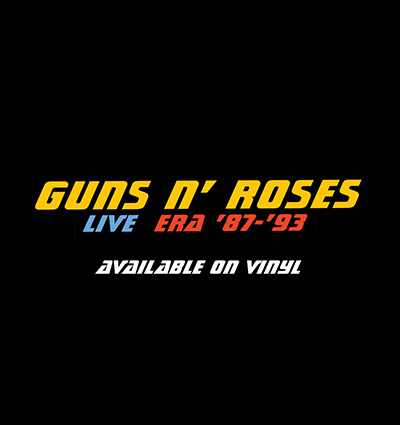



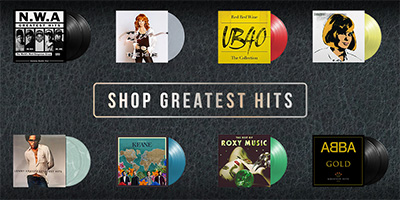
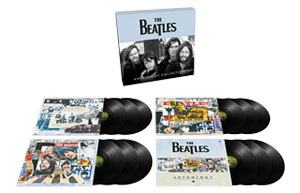

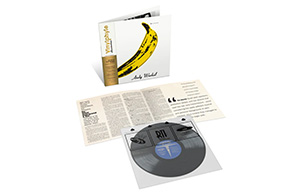
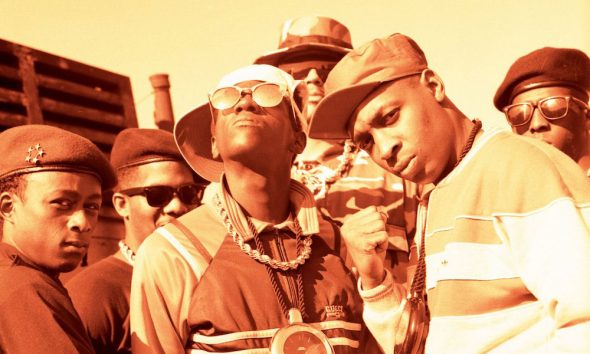
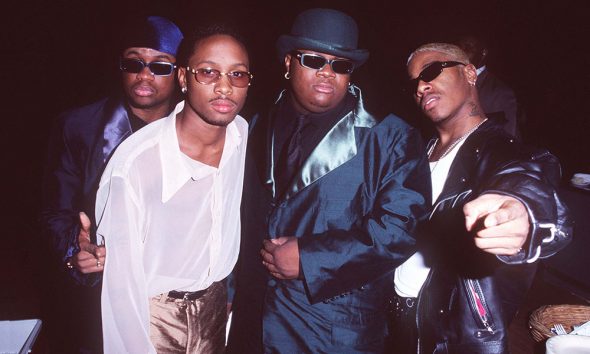
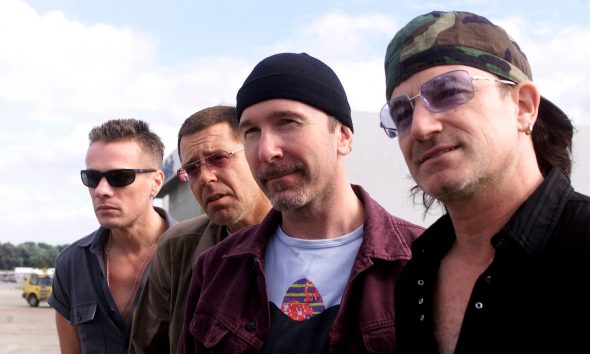
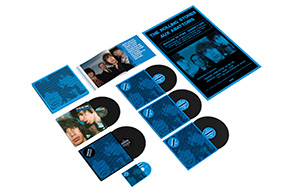
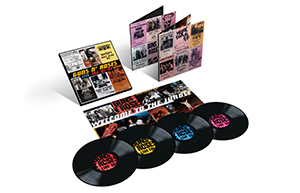
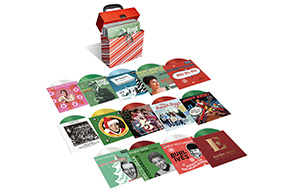
Jim Meryman
December 13, 2018 at 3:09 pm
was Hendrix at Newport “69 as you say?…Led Zeppelin were, though…